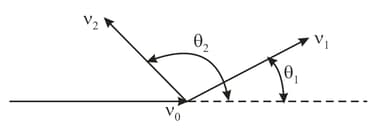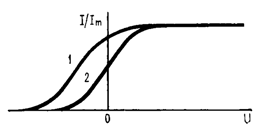L.A.Sena Solutions for Chapter: Optics, Exercise 1: Exercise
L.A.Sena Physics Solutions for Exercise - L.A.Sena Solutions for Chapter: Optics, Exercise 1: Exercise
Attempt the practice questions on Chapter 8: Optics, Exercise 1: Exercise with hints and solutions to strengthen your understanding. A Collection of Questions and problems in Physics solutions are prepared by Experienced Embibe Experts.
Questions from L.A.Sena Solutions for Chapter: Optics, Exercise 1: Exercise with Hints & Solutions
According to the electromagnetic theory of light, the light incident on a surface always exerts a pressure on that surface equal to
where is the intensity of the light, that is, the light energy arriving every second at a unit area of the surface, and is the reflection coefficient. Can the origin of this pressure be explained in the same manner as is done in the kinetic theory of gases, where the pressure of a gas on the wall of a vessel is interpreted as transfer of momentum from each particle to the wall?
The energy distribution function for photoelectrons has the form shown in the figure. What determines the maximal energy of the photoelectrons?
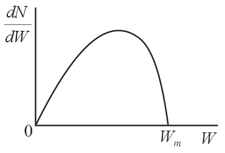
In the Lukirskii-Prilezhaev experiments (also conducted independently by R. A. Millikan), the dependence of the stopping potential , that is, the potential needed to stop the photocurrent in a photocell and the associated electric circuit, on the frequency of the light incident on the surface of the photocell is depicted by straight lines. How to find the Planck constant knowing the slope of these straight lines? In what respect do the parameters that characterize these two straight lines differ?
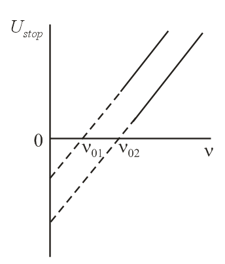
Two electrodes placed in a vacuum at a certain distance from each other are connected electrically by a resistor. One electrode is illuminated with light from a source whose spectrum contains radiation with a wavelength $\lambda$ that satisfies the condition ; where is the work function of electrons leaving the metal of the illuminated electrode. Will there be any current in this circuit?
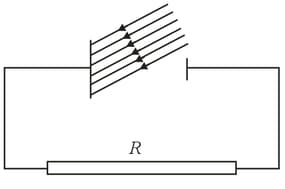
A photocathode can be illuminated by the light from two sources, each of which emits monochromatic radiation. The sources are positioned at equal distances from the photocathode. The dependence of the photocurrent on the voltage between the cathode and the anode is depicted by curve for one source and by curve for the other. In what respect do these "sources differ?
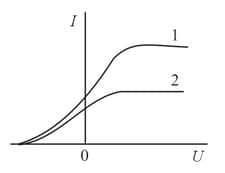
Two photocathodes are illuminated by the light emitted by a single source. The dependence of the photocurrent on the voltage between the cathode and the anode is depicted by curve for one cathode and by curve for the other? What photocathode has a higher work function?
The stopping potential applied between a photo-cathode and the respective anode is such that the fastest photoelectrons can fly only one-half of the distance between the cathode and the anode. Will the electrons be able to reach the anode if the distance between the cathode and the anode is reduced by half but the voltage is kept constant?
In one case of Compton scattering a photon flies at an angle to the initial direction of the incident photons, and in other case it flies at an angle . In which case is the wavelength of the radiation after scattering greater, and in which case does the electron participating in the interaction receive a greater portion of energy?
